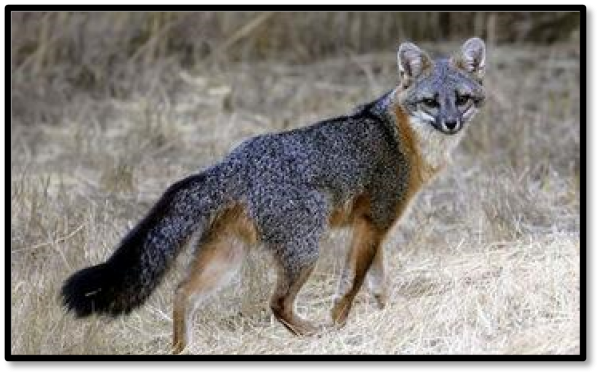Fox

Fox
Red fox (Vulpes vulpes)
Gray fox (Urocyon cinereoargenteus)
-
Wisconsin is home to two members of the Fox family: the red fox and the gray fox. Both types of foxes are about the same size. Gray foxes average 10 pounds and are between 32 and 45 inches long. The gray fox is a mix of gray, red, white, and black fur.
-
A fox’s tail can add an additional 12 to 22 inches to its length.
-
Male foxes are known as dogs, tods, or reynards, and females are called vixens.
-
Foxes have great eyesight. They can see just as well as a cat, in fact.
-
Foxes are also very fast. They can run up to 45 mph (72 km/h). That is almost as fast as the blackbuck antelope, one of the world's fastest animals.
Population: Red foxes are adaptable and can be found in rural, suburban, and urban areas. There is a restricted trapping season on red foxes and a license is required. Grey foxes are more common in southern Wisconsin. There is a limited trapping season on the gray fox that requires the appropriate license.
Habits: Foxes are very social creatures that live in packs. A group of foxes are called a leash, skulk, or earth, according to the U.S. Department of Interior. They are also called packs. No matter what you call them, foxes like to stick near family members. A pack may include older siblings, foxes of breeding age, mates, and mothers.
Diet: Fox are omnivores. This means that they eat meat and vegetation. A fox's diet can consist of small animals, such as lizards, voles, rats, mice, rabbits, and hares. They round out their diet with birds, fruits, and bugs. If they have trouble finding food, a fox will have no problem raiding trash cans to find scraps. Foxes can eat up to several pounds of food a day. What they don't eat, they often bury under leaves or snow for later.
Mating: Fox babies are called pups. During mating season, the female will cry out to let males know that she is ready. After mating, females will make a nest of leaves inside her burrow on which to have her pups. This special room in the burrow is called a nesting chamber. The pregnant female only carries her pups for a gestation period of 53 days. There are usually two to seven pups in a litter. Pup care is a family affair. Both the mother and father share the care of pups. Foxes have a relatively short life in the wild of around three years.
Information from: https://dnr.wi.gov/topic/WildlifeHabitat/furbearers.html and https://www.livescience.com/27168-foxes.html
To download this info:Click Here
